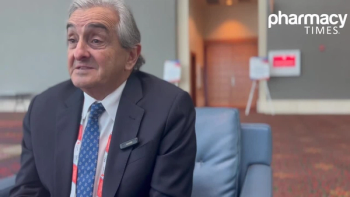
Role of Biosimilars in US vs Europe
A discussion on the adoption of biosimilars in the US vs Europe and the potential cost savings associated.
RELATED VIDEOS
- Efficacy of Biosimilars vs Biologics
- Interchangeability Status in Biosimilars
Anthony Mato, MD, MSCE: We’re focusing our conversation here on the FDA and what happens in the United States. But I know that biosimilars have had a major impact in the European market. Does anyone want to talk about the state and use of biosimilars in the United States versus Europe? How about, Bhavesh, do you want to start there?
Bhavesh Shah, RPh, BCOP: Yes, definitely. We know there’s a biosimilar that’s for infliximab that’s been on the market for 4 years now. Believe it or not, the market share is about 9% for the entire country. Whereas, if you look in Europe, they actually have a market share over 70%. There’s definitely a better adoption of biosimilars in Europe across the landscape of biosimilars.
Anthony Mato, MD, MSCE: Is it because they’re cheaper? Because they’re more accessible? Why do you think that there’s a difference?
Bhavesh Shah, RPh, BCOP: I think that of course their payer system is different from what we have. Also, they’ve actually been a little ahead of the game with having more experience with biosimilars. A lot of their decisions are made at the government level, so it’s much easier when the government says that they’re going to switch everybody in 1 day. In Norway, they basically switched patients from 1 biosimilar to another multiple times in a year because of contracts. If they have a better contract with a manufacturer in 3 months, they’ll actually switch everybody to that biosimilar. They have much more comfort on using biosimilars, and they definitely have the government, and the payers actually have more control over it. I think that really helps adoption of biosimilars.
We’re definitely seeing a huge trend in oncology. If we look at Kaiser Permanente’s model that they’ve developed, they’re a single payer, they have 12.5 million lives that they oversee, and they’ve been very successful in converting in the oncology biosimilars that have been recently been approved. About 60% to 80% of their patients have been converted in the oncology biosimilars that have been approved. There is definitely a movement that we’re going to see in 2020 for biosimilars in oncology.
Anthony Mato, MD, MSCE: What about data in Europe in terms of how these products have impacted costs? Have we seen any publications? Certainly, there’s a rich literature.
Bhavesh Shah, RPh, BCOP: Yes, there is definitely a lot of literature on that. There’s a company called IQVIA Inc. They actually have published a lot of literature in terms of the cost savings that Europe has from biosimilars, and of course this is publicly available.
Marc Earl, PharmD, BCOP: The other thing about Europe that we think about is something we’ve brought up multiple times during our P&T [pharmacy and therapeutics] and formulary review about data from Europe. We did that in the white blood cell growth factor space. We’ve talked about it in the Remicade [infliximab] space about the safety, the efficacy. I think it’s also helped us to have our team gain comfort with these products as well.
Bhavesh Shah, RPh, BCOP: When we were first adopting the infliximab biosimilar, we actually reached out to colleagues in Europe to get their input in regard to their experience because there was definitely some hesitation from our providers. There was actually a peer-to-peer conversation from Europe to the United States in this biosimilar adoption, so that was actually beneficial.
Newsletter
Stay informed on drug updates, treatment guidelines, and pharmacy practice trends—subscribe to Pharmacy Times for weekly clinical insights.


















































































































































































































